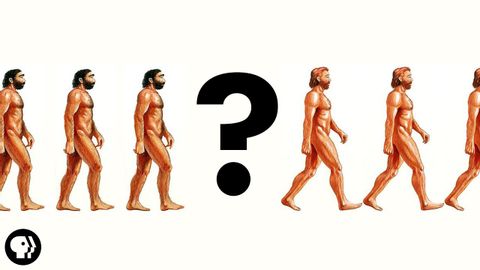人類演化史大發現!人類到底從哪時開始出現的? (There Was No First Human)
jyabc 發佈於 2021 年 12 月 20 日  沒有此條件下的單字
沒有此條件下的單字US /ˈrek.əɡ.naɪz/
・
UK /ˈrek.əɡ.naɪz/
- v.t.認可;接受;賞識;承認;表彰;嘉獎;認出,認識
US /dɪˈskrɪpʃən/
・
UK /dɪˈskrɪpʃn/
US /fɔrs, fors/
・
UK /fɔ:s/
- n.軍隊;力;強迫;武力;影響力;力量;警力
- v.t.被迫;強行打開;催生
